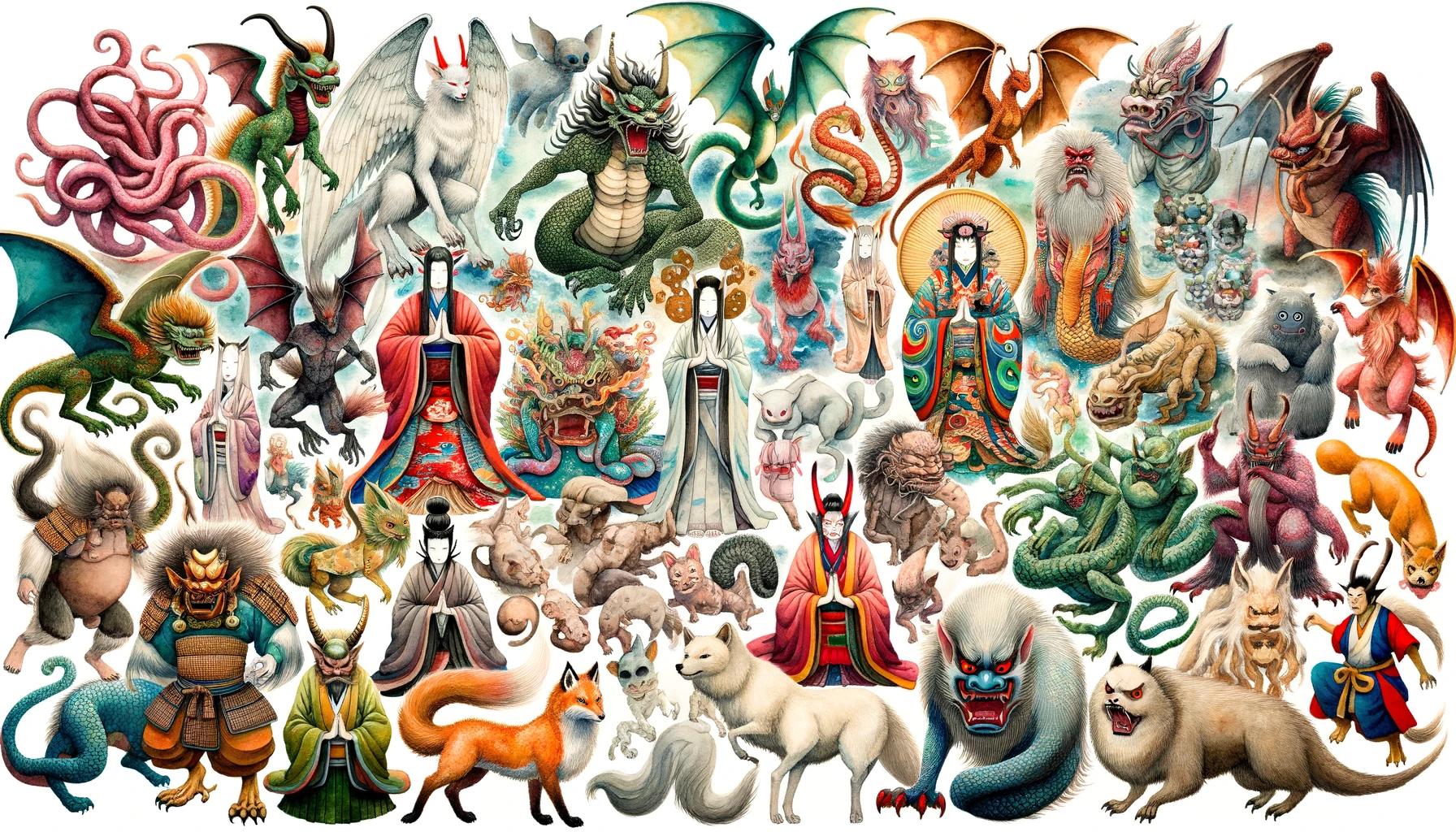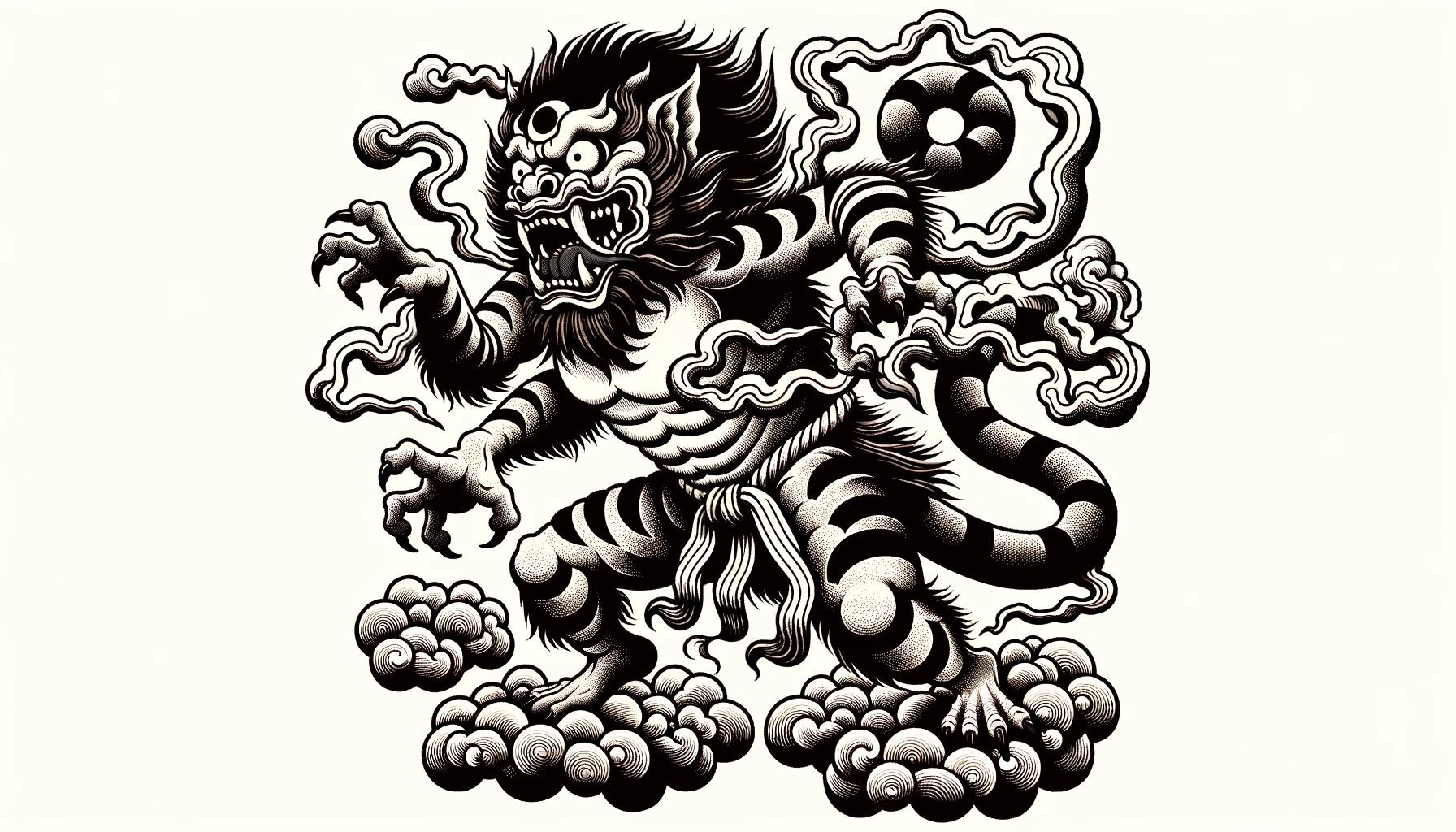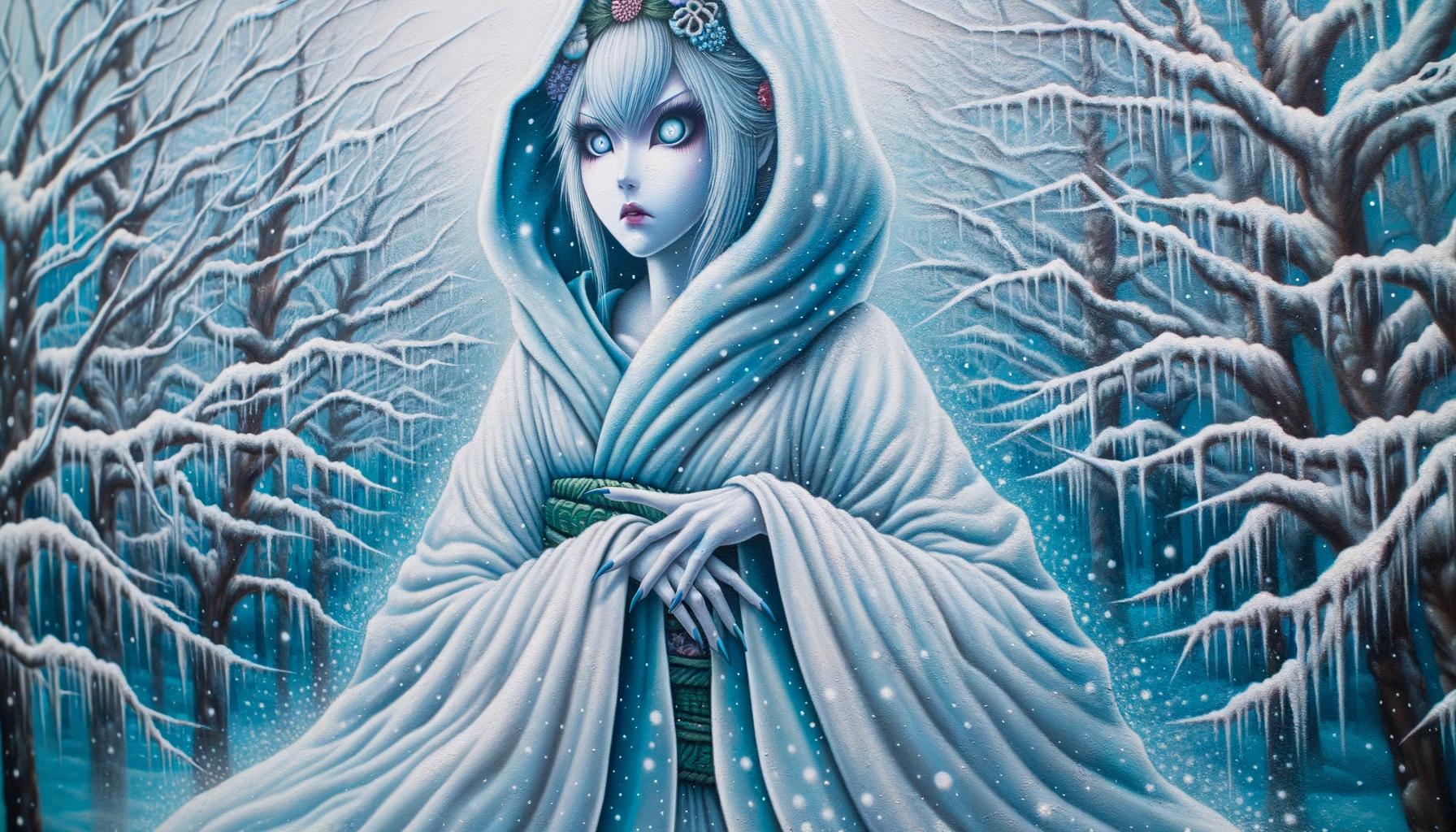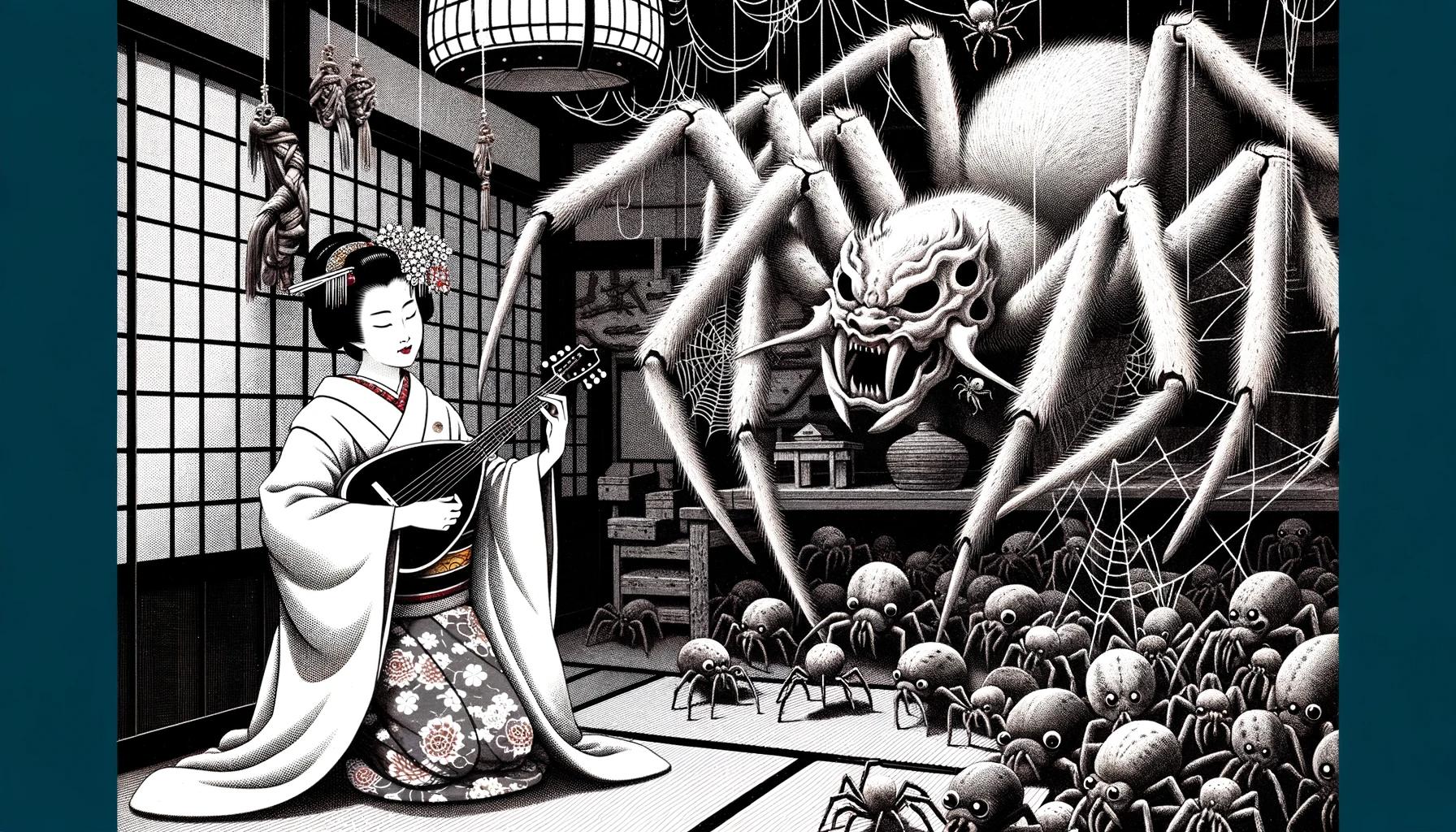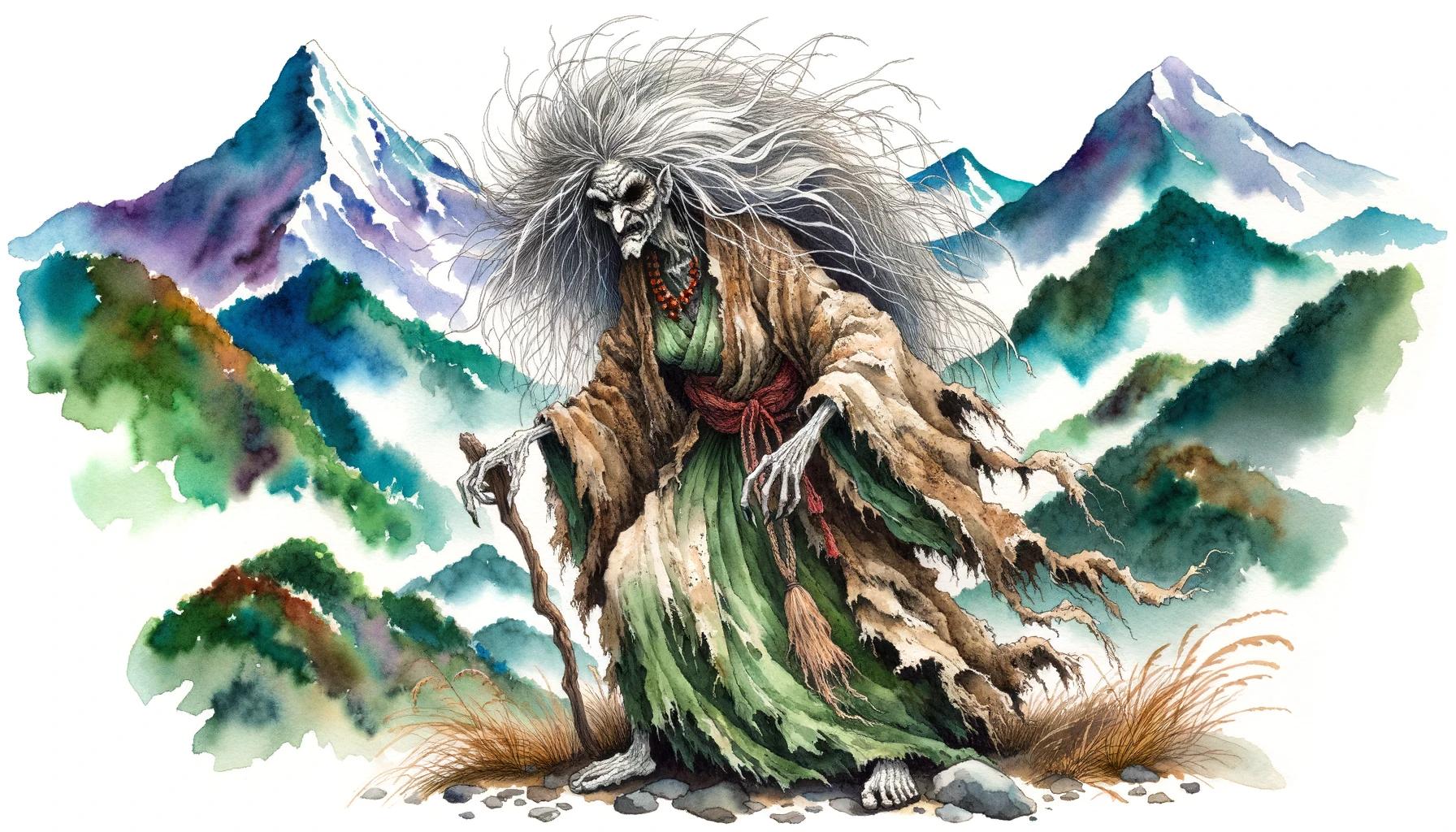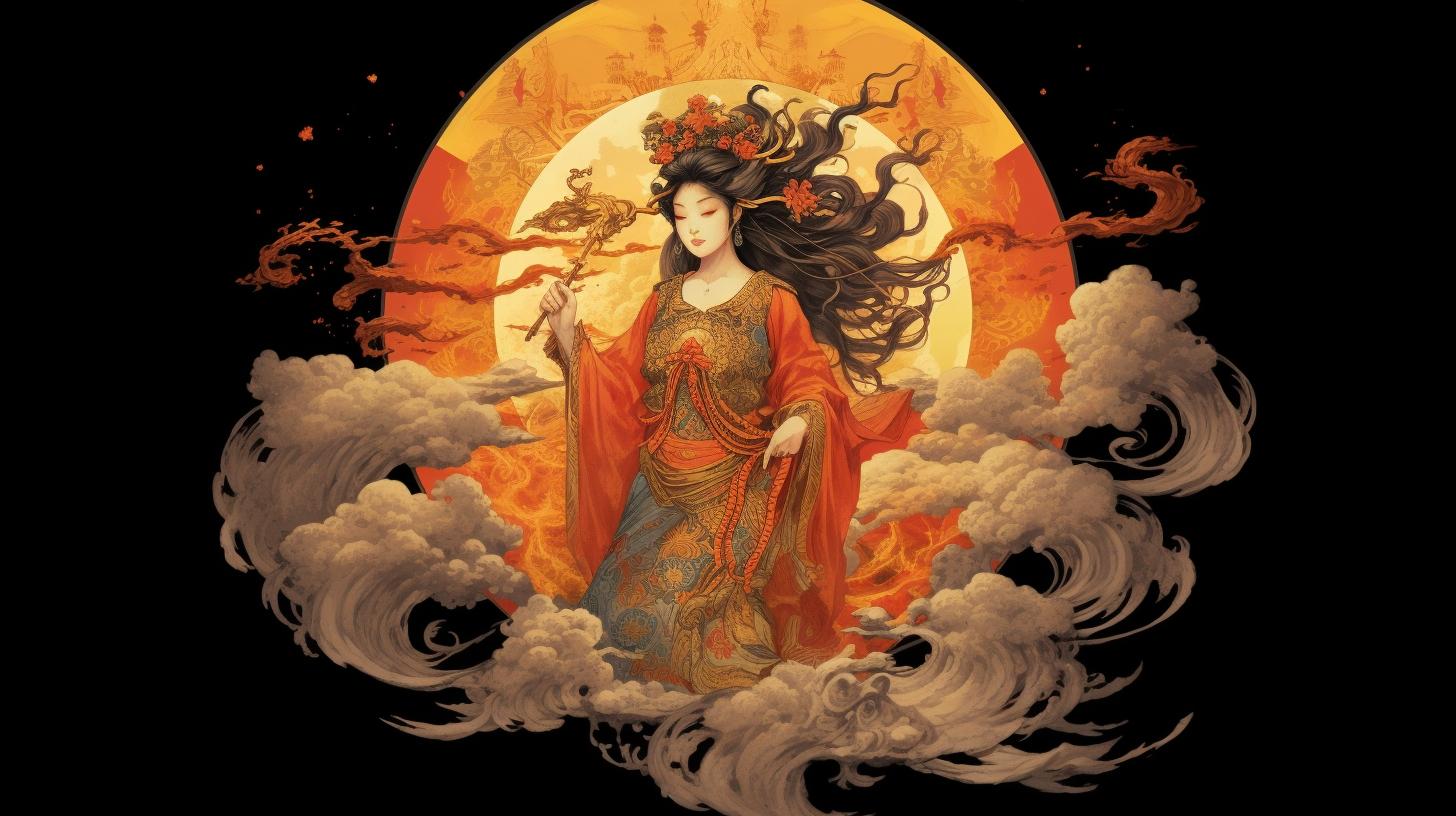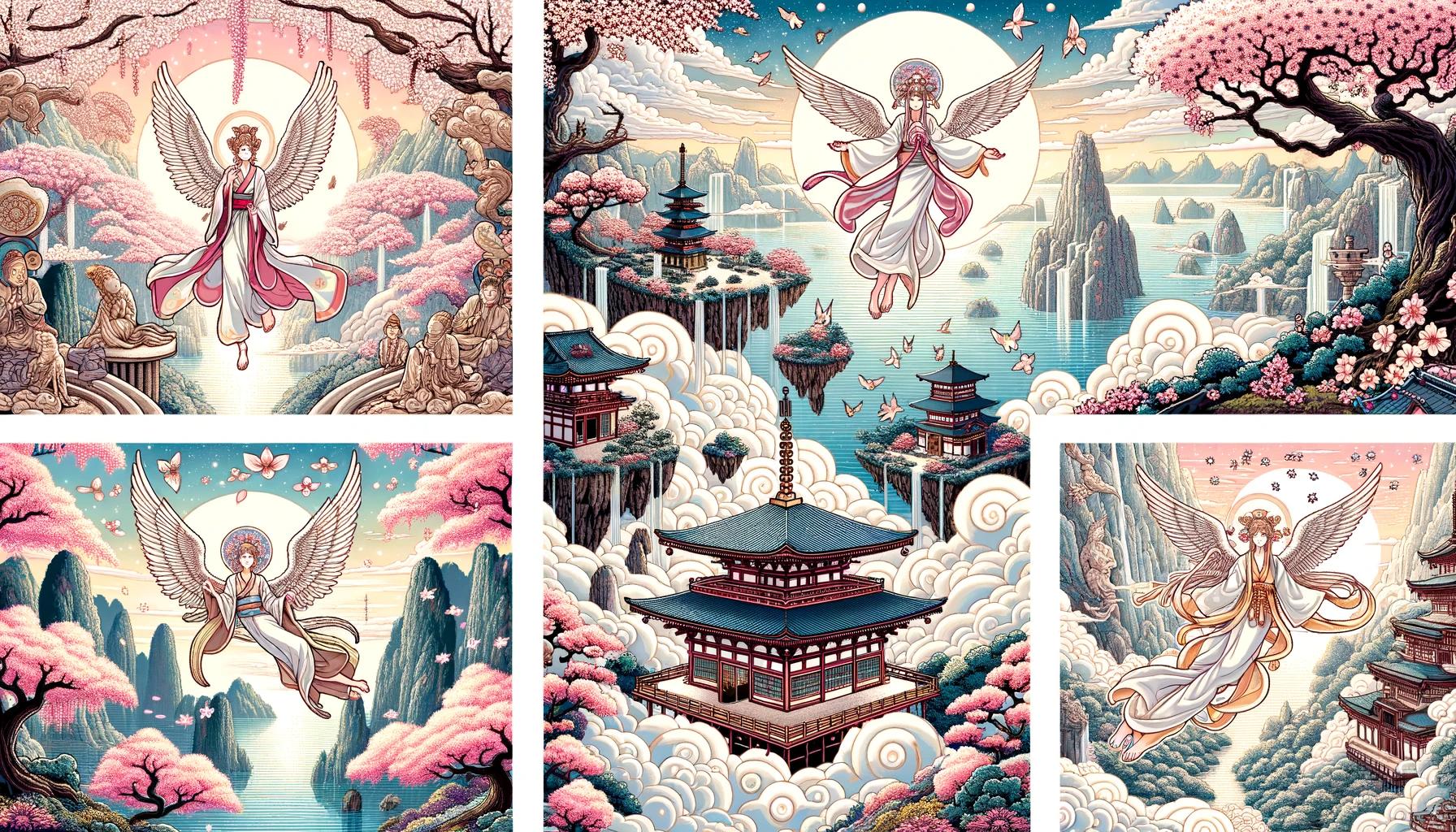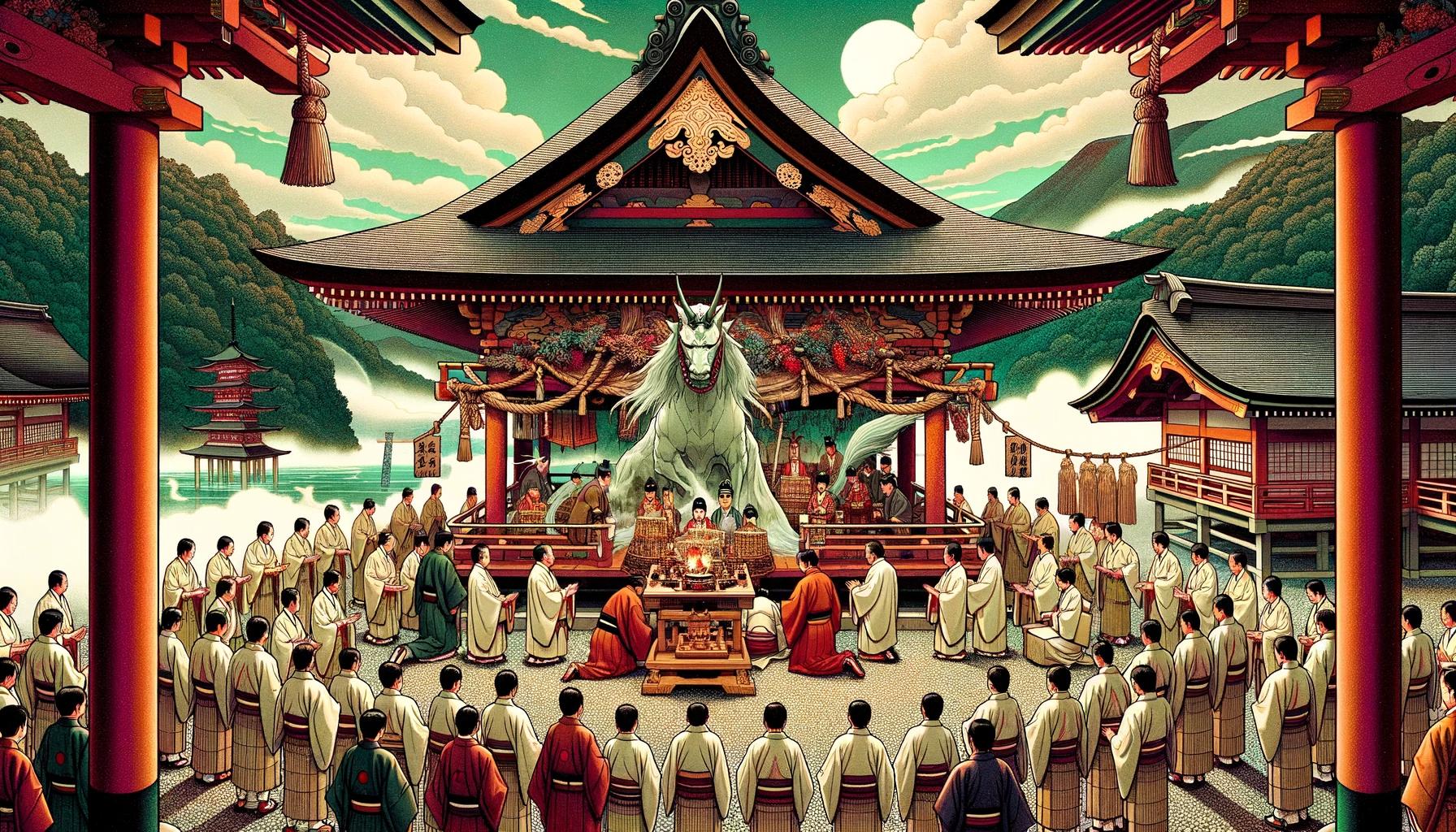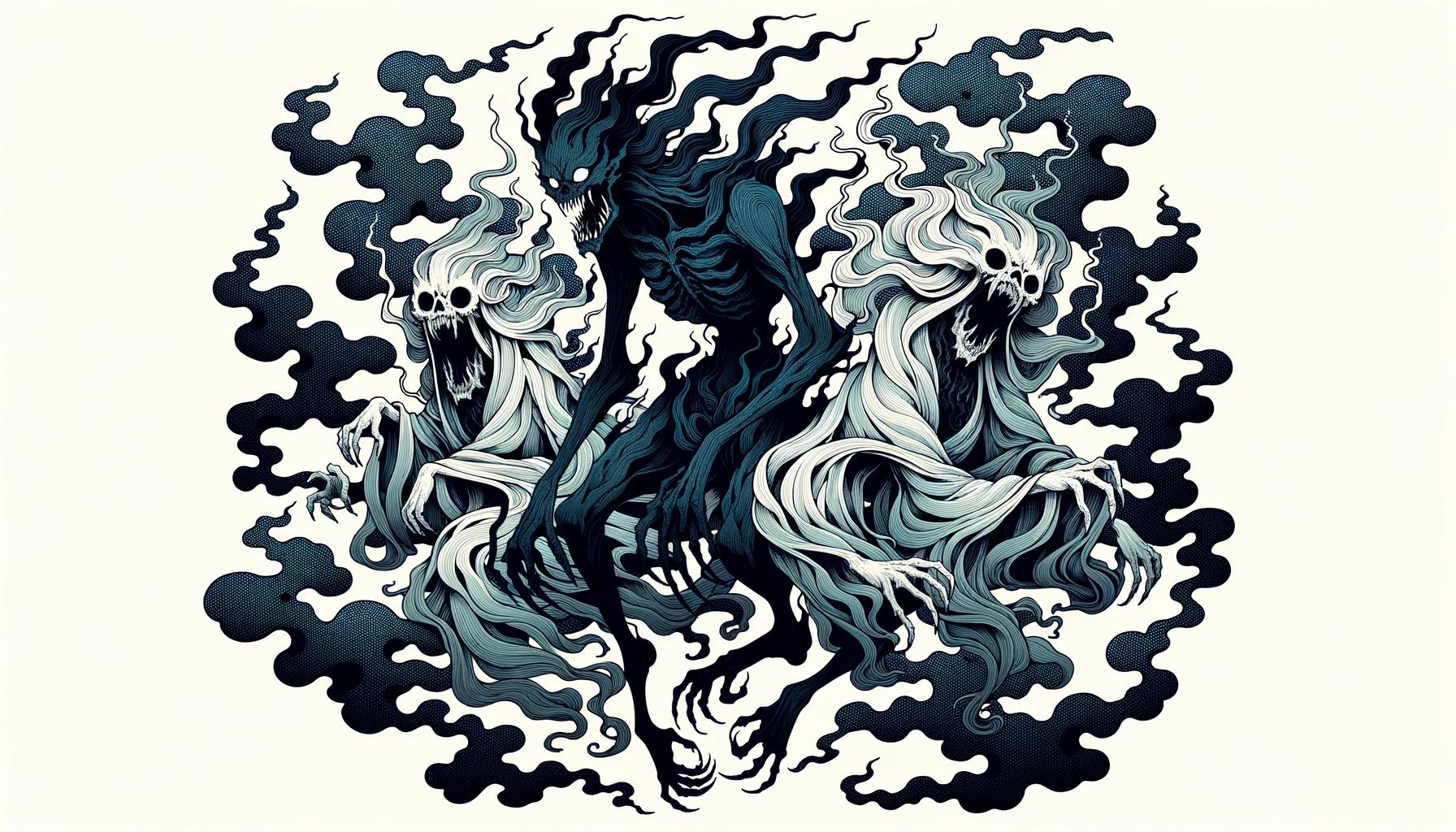Japanese Kappa Monster: A Fascinating Creature from Japanese Folklore
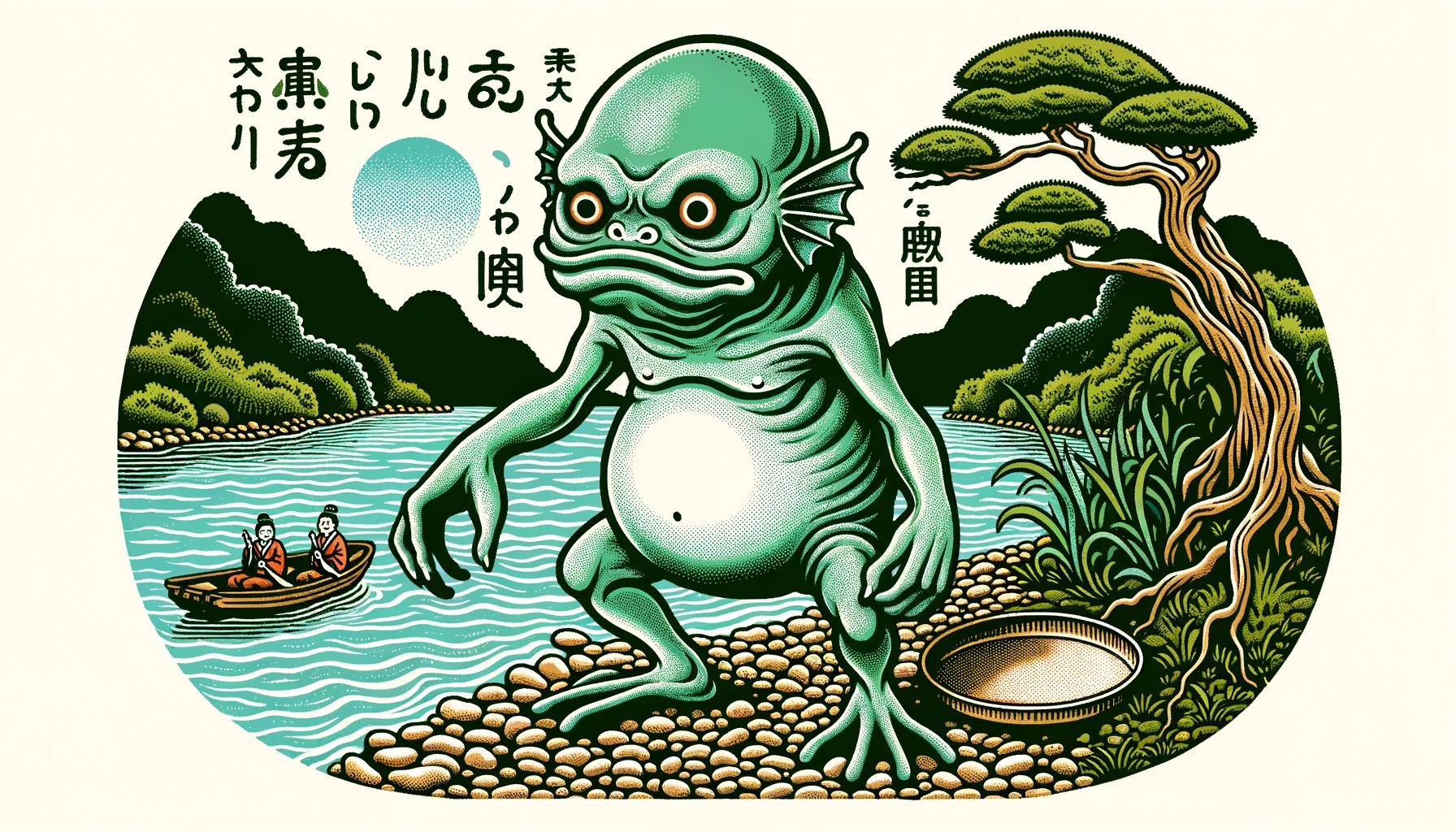
The Japanese Kappa is a fascinating creature deeply rooted in Japanese folklore and mythology. Known as a yokai, a supernatural being, the Kappa holds significant cultural significance in Japan.
With its distinct physical features and connection to water, the Kappa has captured the imaginations of people throughout history. From traditional art to contemporary media, the Kappa’s presence in Japanese culture can still be seen today.
Explore the origins, characteristics, and cultural significance of the Japanese Kappa in this comprehensive article.
Origins of the Japanese Kappa
The origins of the Japanese Kappa can be traced back to the rich folklore and mythology of Japan. These fascinating creatures have captured the imagination of generations, and their origins are deeply intertwined with the cultural fabric of Japan.
Japanese Folklore and Mythology
Japanese folklore and mythology are steeped in captivating tales of supernatural creatures and mythical beings. The Kappa is no exception. According to ancient legends, Kappas are said to be mischievous water-dwelling creatures that inhabit rivers, lakes, and ponds.
They are believed to possess unique physical characteristics and possess a wide range of mystical abilities.
Throughout Japanese history, these fascinating creatures have been the subject of numerous legends and stories, passed down through generations.
These tales often portray Kappas as both friend and foe, displaying their complex nature and intriguing role in Japanese folklore.
Yokai: Supernatural Creatures in Japanese Culture
The Kappa is classified as a yokai, a broad term used to describe supernatural creatures in Japanese culture. Yokai encompass a wide range of mythical beings, from benevolent spirits to mischievous tricksters.
These creatures are deeply ingrained in Japanese traditions and are often depicted in traditional art, literature, and theater.
As a yokai, the Kappa holds a significant place in Japanese cultural beliefs and superstitions.
It is believed that encounters with Kappas can bring both fortune and misfortune, making them subjects of fascination and caution.
Understanding the origins of the Japanese Kappa requires diving deep into the captivating realms of Japanese folklore and mythology, where these mystical creatures originated and continue to intrigue and mystify people to this day.
Characteristics of the Kappa
The Japanese Kappa is an intriguing yokai creature with unique characteristics and a deep connection to water and rivers. Understanding its physical appearance and abilities is key to unraveling the mysteries surrounding this mythical creature.
Physical Appearance and Abilities
Described as a humanoid creature, the Kappa has a reptilian appearance, combining features of turtles and monkeys. It has scaly green skin, webbed hands and feet, and a distinctive bowl-shaped indentation on its head, filled with water that grants it its strength and power.
With exceptional swimming skills, the Kappa is known for its ability to breathe both in water and on land. Its webbed hands and feet allow it to navigate swiftly through rivers and lakes, making it a formidable predator.
Moreover, the Kappa possesses incredible strength, often depicted overpowering its victims with ease. It can also manipulate water, using it as a weapon or to heal itself when injured.
Connection to Water and Rivers
The Kappa mythology revolves around its close association with water and freshwater bodies, particularly rivers.
It is believed to inhabit rivers and lakes, making them its natural habitat. The bowl-like indentation on its head, called the “sara,” contains water, which is its life force.
Legend has it that if the water in the sara spills or dries up, the Kappa loses its power and becomes weak.
As a result, encounters with the Kappa often involve strategies to drain the water from its sara as a means of defense.
Furthermore, the Kappa is often associated with farming communities, as it plays a role in maintaining the balance of water in irrigation systems.
It is both feared and respected for its control over water, as too much or too little can have dire consequences for crops and livelihoods.
- The Kappa’s physical appearance combines features of turtles and monkeys, with green scaly skin and webbed hands and feet.
- It possesses exceptional swimming abilities and can breathe both underwater and on land.
- The distinctive bowl-shaped indentation, the “sara,” on its head is filled with water that grants the Kappa strength and power.
- The Kappa’s strength is formidable, and it can manipulate water as a weapon or for healing purposes.
- It is closely associated with rivers and lakes, considering them as its natural habitat.
- The water in the Kappa’s sara is its life force, and if spilled or dried up, the Kappa becomes weak.
- Farming communities revere and fear the Kappa due to its control over water levels, which affects their crops and livelihoods.
Cultural Significance and Beliefs
Kappa holds a significant role in traditional Japanese culture, deeply ingrained in the folklore and beliefs of the nation.
Let’s explore the important aspects of Kappa’s cultural significance and the fascinating legends and stories associated with this mysterious creature.
Role in Traditional Japanese Culture
Kappa has long been regarded as more than just a mythical creature in Japanese culture. It is often seen as a symbol of both fear and reverence, representing the powerful forces of nature and the unknown.
In ancient times, Kappa was believed to be responsible for various natural phenomena, such as floods, droughts, and even earthquakes. As a result, people developed both rituals to appease the Kappa and precautions to avoid their wrath.
Beyond their association with nature, Kappa also played a significant role in the moral teachings of traditional Japanese culture. These creatures were often depicted as mischievous tricksters who punished those who behaved selfishly or dishonestly.
Kappa legends served as cautionary tales, teaching children important lessons about respect, honesty, and personal responsibility.
Kappa Legends and Stories
The mythology surrounding Kappa is rich with captivating legends and stories that have been passed down through generations. According to some accounts, Kappa were known to abduct and drown unsuspecting victims, especially children or animals that wandered too close to the rivers and lakes inhabited by these creatures.
However, not all Kappa stories portray them as malevolent beings. Some legends describe encounters with Kappa that resulted in positive outcomes. It is believed that if a person can befriend a Kappa, the creature may share its vast knowledge of medicine and healing.
In these stories, Kappa becomes a protector and ally, exchanging its wisdom for respect and tributes.
Throughout history, these fascinating legends have sparked the imaginations of countless individuals in Japan. Kappa stories have been depicted in traditional artwork, literature, and theater, further solidifying their cultural significance and ensuring their enduring presence in Japanese society.
Japanese mythology is rich with a diverse array of supernatural creatures beyond just the Kappa. These legendary beings are often depicted in various forms, each carrying its own unique characteristics and associations within Japanese folklore.
Let’s delve into two notable entities that share the mystical realm with the Kappa.
Oni: Demonic Beings of Japanese Folklore
One intriguing creature in Japanese mythology is the Oni. Often portrayed as formidable and menacing, Oni are demonic beings known for their strength and variety of appearances. While typically depicted with red or blue skin, wild hair, and sharp claws, Oni can vary greatly in their physical attributes and temperament.
They are often associated with punishment, disease, and malevolence, frequently depicted as adversaries in ancient tales.
Other Yokai and their Associations
In addition to the Kappa and Oni, Japanese folklore is populated with numerous other fascinating yokai. Yokai encompass a broad category of supernatural creatures that can range from mischievous spirits to terrifying monsters.
Some popular examples include the Kitsune, shape-shifting foxes known for their cunning nature, and the Tengu, bird-like creatures associated with martial arts and wisdom.
- Kitsune: Known for their ability to transform into humans and their affinity for mischief.
- Tengu: Often depicted with long noses and wings, associated with martial arts and considered as protectors or tricksters.
- Nekomata: Cat-like yokai with the power to manipulate the dead or control supernatural fires.
- Yuki-Onna: A beautiful yet deadly spirit associated with snowstorms and icy landscapes.
These are just a few examples of the vast range of yokai found in Japanese mythology, each with their own unique characteristics and stories attributed to them.
Exploring these creatures not only provides insight into Japanese culture and beliefs but also offers a captivating glimpse into the rich tapestry of Japanese folklore.
The Kappa in Modern Japan
Modern Japan has embraced the fascinating folklore surrounding the Kappa, integrating it into various aspects of popular culture. From movies and anime to merchandise and festivals, the Kappa continues to captivate the imagination of the Japanese people.
Kappa in Popular Culture
The Kappa has become an iconic figure in Japanese pop culture, making appearances in numerous forms of media. Manga and anime enthusiasts are familiar with popular series featuring Kappa characters, showcasing their unique abilities and mischievous nature.
Additionally, the Kappa has made its way into video games, becoming a beloved character in various titles.
The influence of the Kappa in popular culture extends beyond entertainment. Its image is often used for commercial purposes, adorning merchandise such as clothing, accessories, and toys.
Kappa-themed events and festivals are also organized, attracting both locals and tourists alike who are eager to immerse themselves in the captivating world of Japanese folklore.
Kappa Sightings and Modern Myths
Though considered mythical creatures, occasional reports of Kappa sightings have intrigued people in modern times.
These accounts often come from rural areas near rivers and lakes, the traditional domains of the Kappa. Some individuals claim to have spotted the creature or encountered its distinctive handprint markings.
Modern myths surrounding the Kappa have also emerged, with stories of the creature’s encounters or interactions with humans. These tales, whether passed down through generations or shared on social media, add an air of mystery and excitement to the ongoing folklore of the Kappa.
While the validity of these sightings and stories remains in question, they serve as a testament to the enduring popularity and fascination with the Japanese Kappa in modern-day Japan.
Exploring Kappa-related Locations
Embark on a journey to discover the rich history and cultural significance of Kappa-related locations in Japan.
From the bustling capital city of Tokyo to various regions steeped in Kappa lore, these locations offer a glimpse into the captivating world of Japanese mythology and folklore.
Tokyo and Kappa Legends
Tokyo, known for its modernity, also holds fascinating connections to the mythical Kappa.
Deep within this bustling metropolis, you can find hidden gems that reveal the city’s deep-rooted Kappa legends. Explore Tokyo’s historic districts and immerse yourself in stories passed down through generations.
- Visit the Kappa-bashi Bridge in Asakusa, a famous landmark associated with Kappa sightings and folklore.
Take in the serene surroundings and imagine encounters with these elusive creatures.
- Head to the Edo-Tokyo Museum, where exhibits shed light on Tokyo’s historical roots and its ties to Kappa mythology.
Get a glimpse of ancient artwork and artifacts featuring Kappa depictions.
- Don’t miss the Yanagawa Kappa Exhibition Hall in Adachi Park of Living Things, housing an extensive collection of Kappa-related artifacts and offering interactive displays that bring the legends to life.
Other Regions of Japan with Kappa Lore
Outside of Tokyo, various regions in Japan are renowned for their own tales and beliefs surrounding the Kappa.
Explore these areas to deepen your understanding of the creature’s significance in Japanese culture.
- Travel to the Kappabuchi Pool in Tono, Iwate Prefecture, a serene location nestled in nature believed to be a gathering place for Kappa.
Learn about local legends and folklore from the friendly residents.
- Visit the Kizaki Lake in Gunma Prefecture, where Kappa sightings have been reported over the years. Take a boat ride and soak in the tranquil atmosphere while keeping an eye out for any Kappa activity.
- Discover the Kappa Valley in Miyoshi, Tokushima Prefecture, a mystical area overflowing with Kappa-related attractions.
Explore nature trails and interact with locals who share their fascinating tales and encounters.
Exploring these Kappa-related locations allows you to delve into the immersive world of Japanese folklore, where mythical creatures such as the Kappa continue to capture the imagination and curiosity of locals and visitors alike.
Kappa in Art and Media
Kappa, the legendary creatures from Japanese folklore, have long been a subject of fascination and inspiration in the realm of art and media. Their unique characteristics and mythical status have made them popular figures in various forms of artistic expression.
Here, we explore two distinct aspects of Kappa’s presence in art and media: their representation in traditional art and their depictions in contemporary media.
Kappa Representations in Traditional Art
Kappa’s presence in traditional Japanese art can be traced back centuries, with numerous depictions showcasing their distinctive features and mischievous nature. Paintings, woodblock prints, and sculptures often portray Kappa in detailed and imaginative ways, capturing their amphibious appearance, beak-like mouth, and infamous dish-like indentation on their heads.
The vivid colors and intricate designs used in these artworks bring the Kappa legends to life, providing a visual representation that has become deeply embedded in Japanese culture.
Kappa Depictions in Contemporary Media
As Japanese folklore continues to captivate modern audiences, Kappa have found their way into various forms of contemporary media.
From films and television shows to manga and video games, Kappa are often portrayed as both comical and formidable creatures. These modern interpretations often integrate Kappa into thrilling storylines, exploring their supernatural abilities and encounters with humans.
With advancements in technology, the visualizations of Kappa in digital media have become increasingly detailed and realistic, fostering a new generation of fans fascinated by these mythical beings.
In conclusion, the enduring presence of Kappa in Japanese art and media signifies their cultural significance and the continued interest in these captivating creatures.
Their representations in traditional art and their depictions in contemporary media serve as a testament to the enduring appeal and lasting impact of the Japanese Kappa in popular culture.
Famous Kappa Encounters and Stories
Throughout Japanese folklore, there have been numerous accounts and stories of encounters with the enigmatic Kappa.
These tales have been passed down through generations, captivating people’s imaginations and adding to the allure of this fascinating creature.
- The Kappa and the Child: One famous story tells of a mischievous Kappa who tried to drown a child in a river.
However, the child was able to cleverly trick the Kappa into bowing, causing the water contained in its head to spill out and render it powerless.
- The Kappa and the Sumo Wrestler: Another popular legend recounts a Sumo wrestler’s encounter with a Kappa.
The Kappa challenged the wrestler to a wrestling match and took advantage of its strength and agility in water. However, the wrestler managed to escape the clutches of the Kappa by using his exceptional sumo techniques.
- Mizuchi, the Water Dragon: In some stories, Kappa are associated with Mizuchi, a powerful water dragon.
Legends tell of epic battles between Kappa and Mizuchi, where the Kappa’s intelligence and cunning strategies often triumphed over the dragon’s brute strength.
- Guardians of Treasures: Kappa are often depicted as guardians of treasure or hoards.
According to folklore, they would prevent anyone from accessing these hidden riches by challenging intruders to wrestling matches or engaging in various mischievous tricks.
These are just a few examples of the many famous encounters and stories involving Kappa.
Each tale adds depth to the rich tapestry of Japanese folklore and highlights the complex nature of these mythical creatures.
Kappa FAQ and Common Google Searches
As interest in Japanese folklore and mythology grows, people often have questions about the mysterious creatures known as Kappa. Here, we address some frequently asked questions and popular Google searches regarding Kappa:
What Are Kappa?
Kappa are aquatic creatures from Japanese folklore.
They are typically depicted as humanoid beings with reptilian features, such as webbed hands and feet, a turtle-like shell, and a bowl-like depression on their head, filled with water. Known for their mischievous nature, Kappa inhabit bodies of water, primarily rivers and lakes.
Can Kappa Harm Humans?
While Kappa are mischievous, they do not intend to cause harm to humans. However, they can engage in pranks and play tricks, sometimes resulting in injury or even drowning. It’s important to treat Kappa with respect to avoid any potential confrontations or mishaps.
How Do Kappa Behave?
Kappa are often described as curious and intelligent creatures. They are known for their love of cucumbers, sumo wrestling, and skill in playing musical instruments. Kappa are particularly fascinated by human knowledge and can be enticed into challenges or conversations by displaying expertise in specific fields.
Kappa Legends and Mythical Abilities
- They possess great swimming abilities and are commonly associated with hairpin-shaped ridges on the top of their heads, which store power and enable them to swim swiftly.
- Kappa can be dangerous when agitated, but bowing deeply or spilling water from their own head bowl causes them to lose strength or even retreat.
- According to legend, Kappa have a specific weakness – their obsession with manners and politeness.
By providing an appropriate bow, a person can escape or appease a Kappa encounter.
These frequently asked questions and common Google searches provide insight into the curiosity and fascination surrounding the Japanese Kappa.
By understanding their origins, behavior, and cultural significance, we can appreciate the unique role Kappa play in Japanese folklore and continue to unravel the mysteries that surround them.











